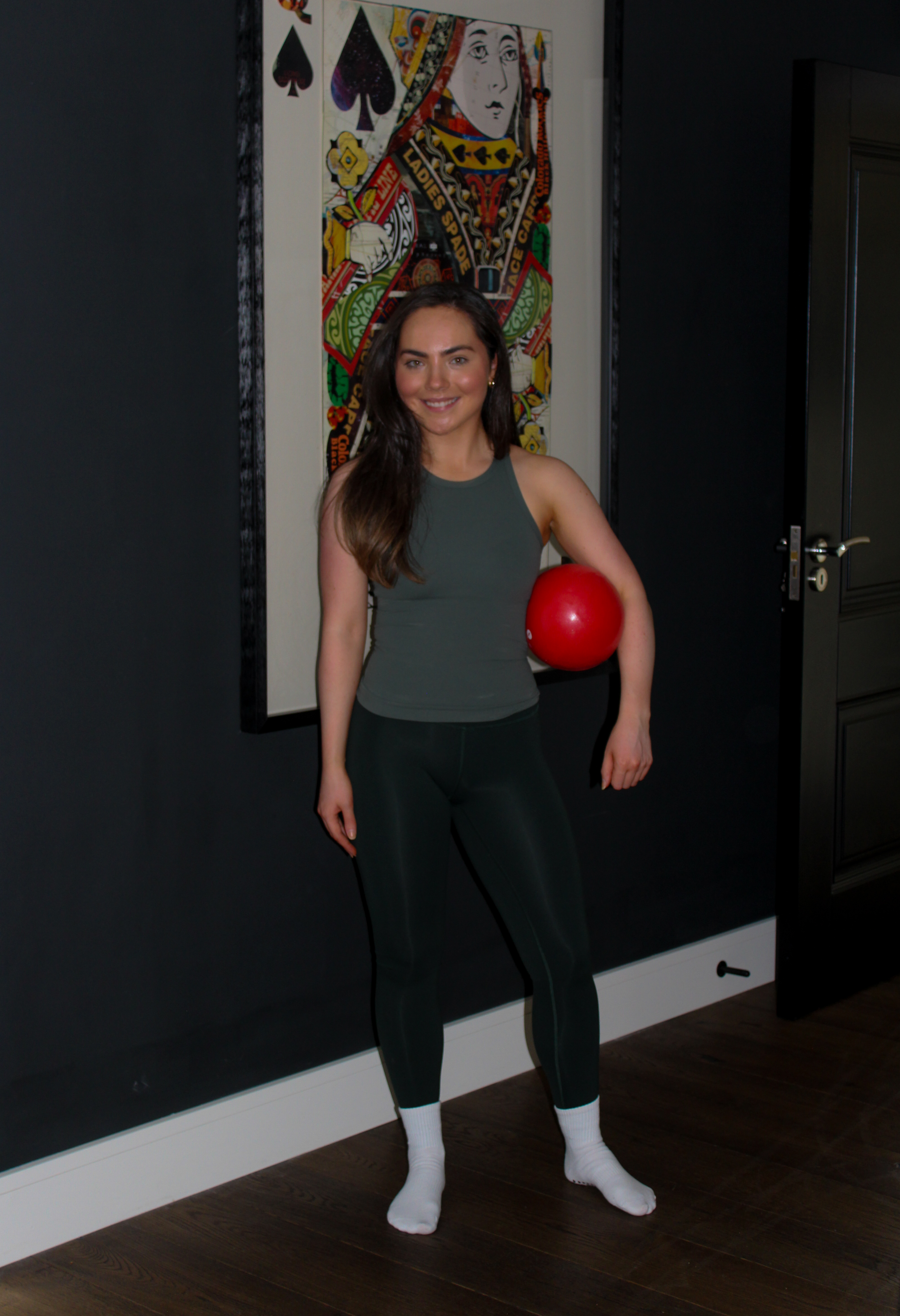Stronger Strides Start at the Barre: Why Every Runner Needs to start Barre
- Barrebyangela

- Jun 19
- 6 min read

‘Recognizing ballet as a legitimate and beneficial cross-training tool can pave the way for athletes to achieve a more holistic approach to their training, thereby maximizing their potential in their respective sports.’ (Lane)
I have tried almost every sport you can think of, both during my time as a ballet dancer, and especially during a break from dancing. During that break, I didn’t train for about six months. As I picked up running and other sports, I started experiencing more and more injuries, along with general stiffness. But when I returned to training and began preparing to become a barre instructor, something shifted. The stiffness disappeared, the injuries faded, and surprisingly I started getting faster. That’s when I began to wonder: could it be barre that was making the difference? I decided to find out.
Cross-training; What is it?
Before I dive into the benefits of barre for runners and how they can overlap, it is essential to address the concept of ‘cross training’ for athletes and general wellbeing.
Cross training and why is it important for athletes
By definition, cross-training means an athlete participates participation ‘’in a different form of exercise than his or her usual sport’’ (Micheli) Athletes often do this in order to improve their skill in primary sport. For example, a swimmer will combine strength work on land, to for example, build their lats, and overall strength.
Cross training not only prevents injury, but it also allows for athletes to not tire from the monotony of doing the same sport every day, and most importantly, it trains and strengthens muscles that are utilised/relied on, but not effectively trained in the primary exercise form.
Particular benefits of barre:
At this stage you might be questioning why barre when I can swim to get a low impact workout, lifts weights to increased strength, or use ergs such as the bike or row machine. I would ask you, does it combine strength of all muscles, does it also have a cardio element, does it engage the core, is it also low impact and does it also increase your flexibility, mobility, and does it increase your mental stamina all in 45-50 minutes? I think not, but barre does.
1. Strengthen all your muscles
In a barre class, every major muscle group is engaged, with each session often focusing on a specific area of the body. Through high repetitions and light weights (typically 1–2 kg), barre effectively works muscles to the point of fatigue. If you're used to traditional strength training at the gym, you're likely familiar with targeting large muscle groups like the quads and hamstrings, which barre also hits. However, what sets barre apart is its ability to isolate and strengthen smaller stabilising muscles that are often overlooked in conventional training. These micro-muscles play a crucial role in balance, alignment, and injury prevention.
Example of micro muscles essential for runners and barre trains: Gluteus medius and minimus… transverse abs….the list is long
2. Cardio
Barre may look graceful, but don’t be Fooled, it raises your heart rate in a big way. This derives from compound movements that work multiple muscle groups at once. For example, performing a plié while lifting weights overhead, or adding pulses and holds into sequences, delivers a cardiovascular challenge without the high-impact strain of traditional cardio.
Even without jumping, sustained time under tension keeps the heart working, especially when the class flows with minimal rest. Over time, this improves aerobic capacity, muscular endurance, and recovery efficiency, all critical for runners.
3. Core workout
The core is a powerhouse that enables runners to keep balance, recover from missteps and is especially important to keep correct form for the last leg of a long run when the body begins to fatigue. The entirety of barre class focuses on the core and stabilising and working through the core.
The core is the body’s powerhouse. It helps runners stay balanced, recover from missteps, and maintain form, especially in the final stretch of a long run when fatigue sets in.
In barre, nearly every movement targets the core and its stabilisers. This doesn’t just mean six-pack abs, the core goes much deeper, and feeds into the back of the body, to keep your body upright and strong.
We focus on deep core engagement through breath, and communication between the head, ribs and pelvis.
Take home for runners; “Core strength helps the pelvis and lower back work together, resulting in less energy used when running” (Runners World)
4. Low impact – Allows a break to joints
Running is high impact on the joints. Barre will target muscles such as the glutes and hip flexors without high impact.
5. Improve your flexibility and mobility
In each class a muscle group is worked to fatigued, mobility exercises intertwined, and then stretched and we move onto the net group. Both are essential for runners to perform to the optimum. At times, the exercise itself results in increased flexibility without you even realising it! (most students have noted increased inner thigh flexibility and hamstring flexibility.)
6. Mental stamina
The shaking and burn that is felt dues to isometric holds and pulses is something that is rarely experienced outside of barre. If you think you have shaken before, you have not. This happens throughout class when fatiguing a muscle group. It takes serious mental focus and determination to push through those moments. Barre challenges both body and mind, and that’s where real strength is built.
Bedosky, runners world, notes that ‘’I’ve learned to push myself harder in running because my mind has become stronger by powering through tough workouts….Now I know that even if my legs feel like they’re going to give out during a speed work session, they won’t…’
Muscles that are essential for running and barre fitness can train
Example: Hip flexors
The hip flexors are a group of muscles located at the front of the upper thigh. They play a critical role in running contracting to swing the leg forward and lengthening during the stance phase as you push off the ground.
As Dr. Bennett (Nike) explains, "Your hip flexors work hard during every run …[and]… they work overtime during sprint and hill workouts."
For runners, the hip flexors are frequently engaged in a shortened position, much more so than in non-runners. This repeated shortening often leads to tightness and reduced mobility. If a runner also spends long hours sitting at a desk, this effect is magnified, making the muscles even tighter.
Over time, tight hip flexors can:
Limit hip extension
Reduce stride length
Inhibit effective glute activation, which is essential for power and injury prevention
How Barre Helps
Barre training addresses these issues in the hip flexors by improving:
Mobility: Through dynamic and controlled movements that increase joint range
Strength: Targeting the hip flexors through isometric hold, pulses and adding load
Flexibility: With stretches that allow the release of the hip flexors
Exercise to try: Leg lifts
Prepare:
Stand tall with your heels together and toes turned out in a small V-shape (first position).
If you feel discomfort in the hips or knees, narrow the V to a more comfortable turnout.
Place one hand lightly on a chair or barre at hip height for balance.
Slightly tuck your pelvis to maintain a neutral spine and engage your core.
Inhale to prepare.
Movement
Exhale and lift your outside leg (the one farthest from the chair) directly in front of you.
Keep the leg straight and the foot pointed.
Focus on control, not height.
Inhale to lower the leg with control; exhale to lift.
Perform 8 slow, controlled reps. You should feel your hip flexors begin to fatigue as you maintain precision.
Add-On Challenge
With the leg still lifted, draw tiny circles with your big toe, 8 reps in each direction.
Then, pulse the leg upward toward the ceiling for 8 small pulses. (1-2 inches)
REPEAT ON THE OTHER LEG
Ask yourself:
a. Is my back hunched over? Straighten it.
b. Are my shoulders back and down and is my chest high?
c. Am I breathing? Do not hold your breath. Your breath will help you to engage your core. Say it with me INHALE LOWER, EXHALE LIFT.
Play music at 128bpm will help you keep in time if you want the challenge and company of music. Type in 128bpm into spotify and a song that is the same genre as the music you listen to will come up! I recommend only doing this once your have tried the movement a few times and you are confident with your form.
Even try doing these next to a tree for balance or wall after your run/at a run club together!
To conclude, barre is a great form of cross training, and can assist any runner in improving their overall performance. I do want to note however, that this is theoretical as there is no research done on the link between ballet/barre directly with running. There are, however strong studies in relation to barre as a beneficial form of exercise for the muscles that runners use.
Happy running and I hope to see you at the barre soon,
Angela xxx
References
Micheli, L. J, ‘’Cross-training’’in ‘Encyclopedia of Sports Medicine’ (Vol. 4, pp. 339-339). SAGE Publications, Inc., https://doi.org/10.4135/9781412961165
Lucero, Blythe, ‘’Strength Training for Faster Swimming,’’ Meyer & Meyer Sport, 2014, p.17.
Lane, Erin, ‘’Cross-Training Effects: The Impact of Ballet Instruction on Athletes’ Physical Attributes and Performance’’ (2024). Master's Theses. 339. https://digscholarship.unco.edu/theses/339
Bloch, Gordon B, ‘’Cross Training: The Complete Training Guide for All Sports. Simon & Schuster, 1992, pp. 16-19.’’
.png)



Ya, I've got a Cat
HOW'S IT GOING WITH GUY'S----OVER THERE TODAY.
I'm MUHAMMAD KAMAAR A Wix Partner. During a recent review, Wix’s technical team highlighted your website and recommended it to my team for support pointing out areas to improve performance, visibility on Google, and overall accessibility for users.
After conducting a detailed review, I noticed a few technical search rank hurdles, crawl errors, slow indexation, missing structured data, and accessibility gaps like unlabeled images and keyboard-navigation issues. Left unaddressed, these can limit visibility, delay Google indexing, and affect user experience.
By optimizing your site with the right search rank strategies and webpage design (including any potential redesign where needed), we can boost traffic and increase actions from visitors.
If you’re interested, I can…
Yay Sure 😃
Highly recommended, you know?